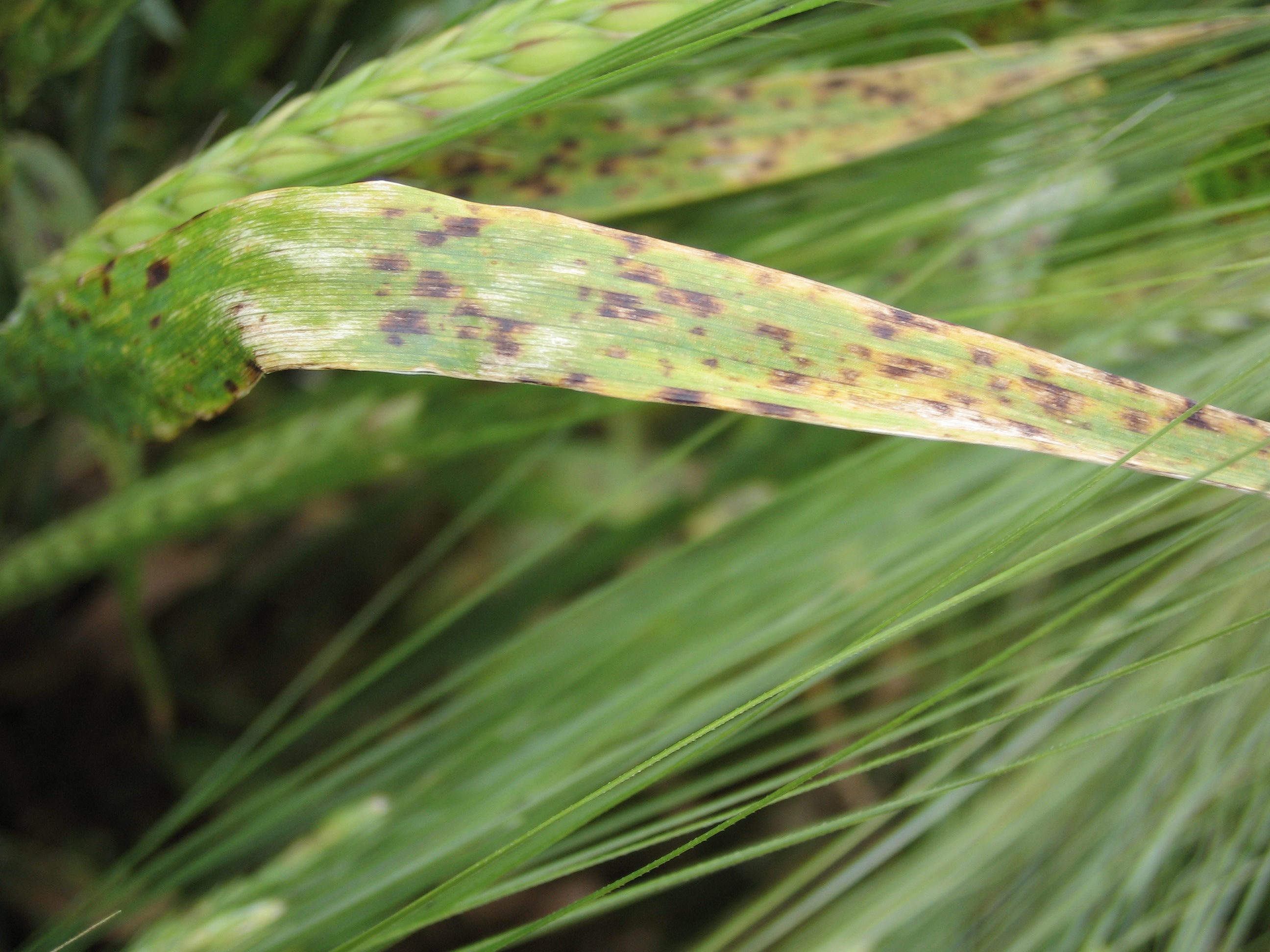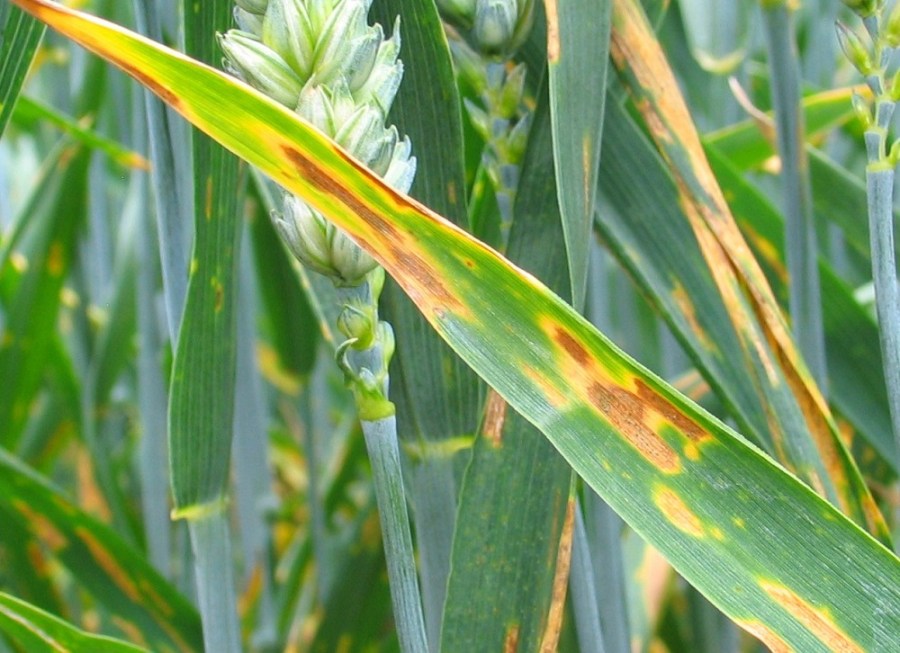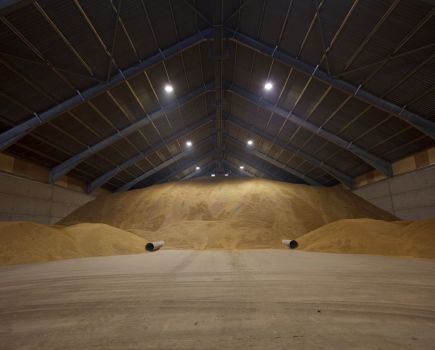Fungicide resistance in key diseases is becoming an increasing problem across a range of arable crops. CPM discovers how research is helping develop sound resistant management strategies to protect both existing chemistry and future fungicide actives as they come through the innovation pipeline.
Every time a fungicide is applied, selection pressure pushes the pathogen population a little bit in a direction you don’t want.
By Lucy de la Pasture
For cereal crops, disease management is on a knife edge, with clear resistance strategies much needed to prevent the balance tipping further in the pathogens’ favour, says AHDB’s Dr Paul Gosling.
“It’s important to manage fungicides well, not just to fill the gap until new chemistry arrives but also to maintain the efficacy of SDHIs and azoles at a level that will be able to help protect new actives,” he comments.
The latest shifts in fungicide insensitivity were presented at the AHDB Agronomists’ Conference last Dec. There was good and bad news for cereal growers, with the decline in azole efficacy appearing to have stabilised at a level very similar to the past three years. For SDHIs, only a very slight shift in sensitivity in septoria has been detected in the UK, but a very significant shift in ramularia has been seen.

AHDB are launching a Fungicide Futures initiative this spring, with the aim of providing clear anti-resistance guidelines ahead of the main fungicide timings.
“Although SDHIs remained highly active against septoria in 2017, there’s an increasing frequency of mutant strains with reduced sensitivity in the UK population, and indications of changes in efficacy in trials,” explains Paul.
Despite the efforts of the Fungicide Resistance Action Group–UK (FRAG-UK) and the fungicide manufacturers, general advice is still sometimes inconsistent with good resistance management practice. This is unlikely to be deliberate and reflects the complex science and uncertainty around the best approach for every situation, he believes.
But the writing is far from on the wall for SDHIs, robust anti-resistance measures will slow further spread of resistant isolates and preserve efficacy, reckons Paul. AHDB have just launched ‘Fungicide Futures’, a new initiative in collaboration with FRAG that will provide guidance in advance of the key fungicide application timings this spring. Advice will be updated for both wheat and barley crops as the season progresses, taking both seasonal pressures and resistance risks into account, he explains.
Prof Fiona Burnett of SRUC and chair of the Fungicide Resistance Action Group emphasises that there’s a very tangible goal to Fungicide Futures and that’s to maintain the activity of existing chemistry for a few more years until support arrives in the form of new active ingredients.
“New chemistry won’t be a ‘get out of jail free’ card and will also need to be used within a resistance management strategy. But we have strong evidence that where these management practices are adopted, stewardship is effective and can make a difference.

There was a big shift in SDHI efficacy on ramularia in 2017, with only chlorothalonil providing efficacy in some situations.
“For example, the very insensitive septoria isolate C-H152R appears to be less fit than other isolates with reduced sensitivity to SDHIs. It dies away over the winter and doesn’t reappear in crops until late in the season, and only in situations where SDHI usage is high.
“This backs up the advice only to use one SDHI where possible, and to only apply two where the risk of yield loss from disease is high. That should be a ‘win-win’ for growers as expensive chemistry will be targeted only at the most responsive crops,” she says.
Underpinning the messages of Fungicide Futures is a core of ongoing research. ADAS’s Dr Neil Paveley is leading a project investigating managing resistance that’s evolving concurrently against two or more modes of action, as is happening with septoria to SDHIs and azoles.
“Preliminary data from the first year of the project reinforces the current anti-resistance guidance that when SDHIs are used, they should be combined with robust azole rates (at least ¾ of full label rate) and multisite chemistry.
“One of the ‘immovable laws’ of resistance management is that every time a fungicide is applied, selection pressure pushes the pathogen population a little bit in a direction you don’t want. One application of SDHI is preferable for this reason, but growers should still have the freedom to make their own choices and not be restricted to one application by regulation, as in France,” he believes.
Fiona highlights that by adopting anti-resistance guidelines both azole and SDHI chemistry benefit from reduced selection pressure in the field. “The fungicide performance data shows that the efficacy of the azoles appears to be stabilizing. Using SDHIs as part of the programme has clearly benefited azoles,” she says.
“Adding a multisite adds further protection and can also boost disease control. However still only around 50% of wheat crops get a multisite at T2 and we can do better than that,” suggests Paul.
Variety choice is one of the areas where ground could be gained on fast-changing pathogen populations. “The growing of septoria susceptible varieties is inextricably linked to fungicide need and as an industry, we need to stop growing these ‘anti-social’ varieties”, believes Neil.
“Newer wheat varieties on the AHDB Recommended List are offering good disease resistance and high yields in all the nabim groups. “For example, Elicit is a promising newcomer for 2018 – with a yellow rust rating of 9, a septoria rating of 6.4 and both high treated and untreated yields,” he says.
“There’s been a move towards the more disease-resistant varieties, but their adoption needs to accelerate as part of an anti-resistance strategy,” he comments.
“Varieties with both septoria and yellow rust resistance will help avoid azole usage early in the season. Where azoles are being used to control early infections of yellow rust, they will also inadvertently be pushing the septoria population by selecting for the more insensitive strains.”
For Fiona, applications of azoles at T0 is perhaps a routine practice that needs to be questioned. “Yield responses to T0 sprays aren’t significant where septoria is the main disease. There doesn’t appear to have been a massive shake-up in yellow rust populations in 2017, so an early fungicide shouldn’t be required on a resistant variety if it’s behaving as expected. It’s better not to expose the azole and keep it for T1,” she confirms.
One of the problems the industry needs to address is ‘insurance spraying’, adds Paul. “In spite of a move towards growing varieties with better septoria resistance, pesticide usage survey figures indicate that there hasn’t been an associated reduction in the amount of fungicide applied. They also suggest usage doesn’t fluctuate in response to seasonal risk.”
Shifts in fungicide sensitivity aren’t confined to cereal crops. In OSR, light leaf spot (LLS) is very much under the microscope, with strains having reduced sensitivity to azoles already known to occur in the UK.
“We’re further behind the cereal sector in developing specific anti-resistance strategies in OSR and we’re even more limited in the chemistry available to use on the crop,” says ADAS pathologist Dr Faye Ritchie. “We need to understand the mutant strains better and assess their distribution within the LLS population.”
With that goal in mind, Faye is leading a project which aims to improve resistance management strategies in OSR and maximise the life of fungicides used in the crop. “Encouragingly there was no shift in fungicide performance on LLS in 2017, says Faye, adding that 2017 was a low-pressure year in many areas for the disease. “However, we should still use general fungicide resistance management strategies, such as using more resistant varieties and avoiding the repeated application of fungicides having the same mode of action as recommended by FRAG.”
Potato growers have become familiar with dealing with a changing pathogen population since the 13_A2 and 6_A1 strains came on the scene. Even so, the arrival of 37_A2 in 2016 and its increase in prevalence during 2017 will mean fungicide programmes will need a re-think in 2018, says Dr David Cooke of James Hutton Institute.
In preliminary results reported at the AHDB Agronomists Conference, of the 495 of 666 blight samples genotyped, the proportion of 37_A2 in the population has increased from 3% to 24% during 2017. It’s a worrying development, he says, because this particular strain is reported to have insensitivity to fluazinam, which is particularly important for the control of tuber blight.
“There’s been a significant increase in 37_A2 but it hasn’t been as dramatic as when 13_A2 came on the scene. It appears to be aggressive and a change in management strategy will be required to combat tuber blight, without reliance on fluazinam,” he comments.
A balancing act
When it comes to making fungicide decisions on farm, BASF’s Dr Rosie Bryson believes that agronomists will have to take a pragmatic view. She points out that the need for good disease control to optimise crop performance and the best decision from an anti-resistance point are not always compatible.
“There needs to be a pragmatic balance between an effective anti-resistance strategy and effective disease control, unless growers are prepared to sacrifice yield to protect chemistry,” she notes.
With BASF’s new azole Revysol and Dow’s Inatreq, nearing the market end of the innovation pipeline, protecting both existing and new modes of action are equally important.
“The difficulty we face is a decreasing number of options for septoria control, and we mustn’t forget that SDHIs protect the azoles as well as the other way around. That means dropping an SDHI at T1 isn’t an easy decision to make and is likely to be a risky option in situations of medium to high septoria pressure, which isn’t always easy to predict.
“We’ll undoubtedly lose more active ingredients in the future through increased regulation, and new chemistry will also be under threat from resistance with fewer partner options. So ultimately our approach to agronomy will need to change, not just the way that we use chemistry,” she adds.
“There’s scope to tailor programmes more, adjusting fungicide use to both varietal risk and disease pressure. Later drilling and paying attention to getting fungicide timings spot on, particularly in higher risk varieties, will help reduce disease pressure,” she says.
Rosie points out that the Danish approach is to mix 2-3 wheat varieties in the same field to reduce disease pressure. “I know this isn’t popular within the grain trade, but it may be something UK growers have to consider in the future,” she suggests.
“The septoria population is certainly shifting and in the UK we’re seeing a slow emergence of moderately adapted isolates to SDHIs. We still have a very high level of performance, but the resistance threat can’t be ignored.
“There’s a lot of complexity in SHDI mutations and they’re likely to become far more complex as SDHI resistance evolves further. What we don’t know is how the population will develop in the future.
“However, resistance management has come a long way since the emergence of strobilurin resistance. To date, resistance management of the SDHIs has been pretty effective,” she adds.
A better understanding of septoria resistance, together with the modes of action (MOA) of the fungicides applied, are both factors that would help good decision making in the field, she believes.
Highlighting MOA information for plant protection products is already under discussion. In a recent joint statement from the three Resistance Action Groups (weeds, pests and diseases), the importance of rotating and mixing modes of action as a part of anti-resistance management was recognised and they recommended that MOA labelling should be ‘actively considered’.
Another important element to managing the performance of fungicides in the field is to select an appropriate dose. “It’s important to remember that products are designed for the whole of Europe, not the UK in isolation. That means that a product that’s perfectly balanced in one environment, may not be balanced under another set of disease pressures and threats. So disease pressure and risk need to be taken into account when selecting dose rates and balancing the dose of any partner products,” she concludes.
Research round-up
Information on resistance management guidance and research can be accessed via cereals.ahdb.org.uk/fungicidefutures




